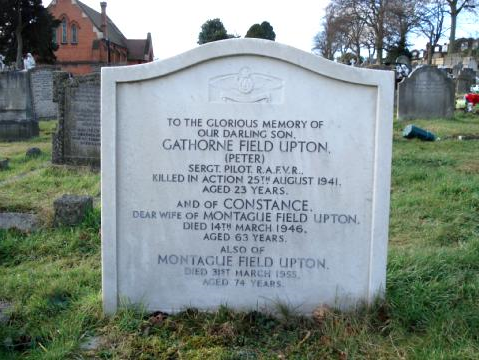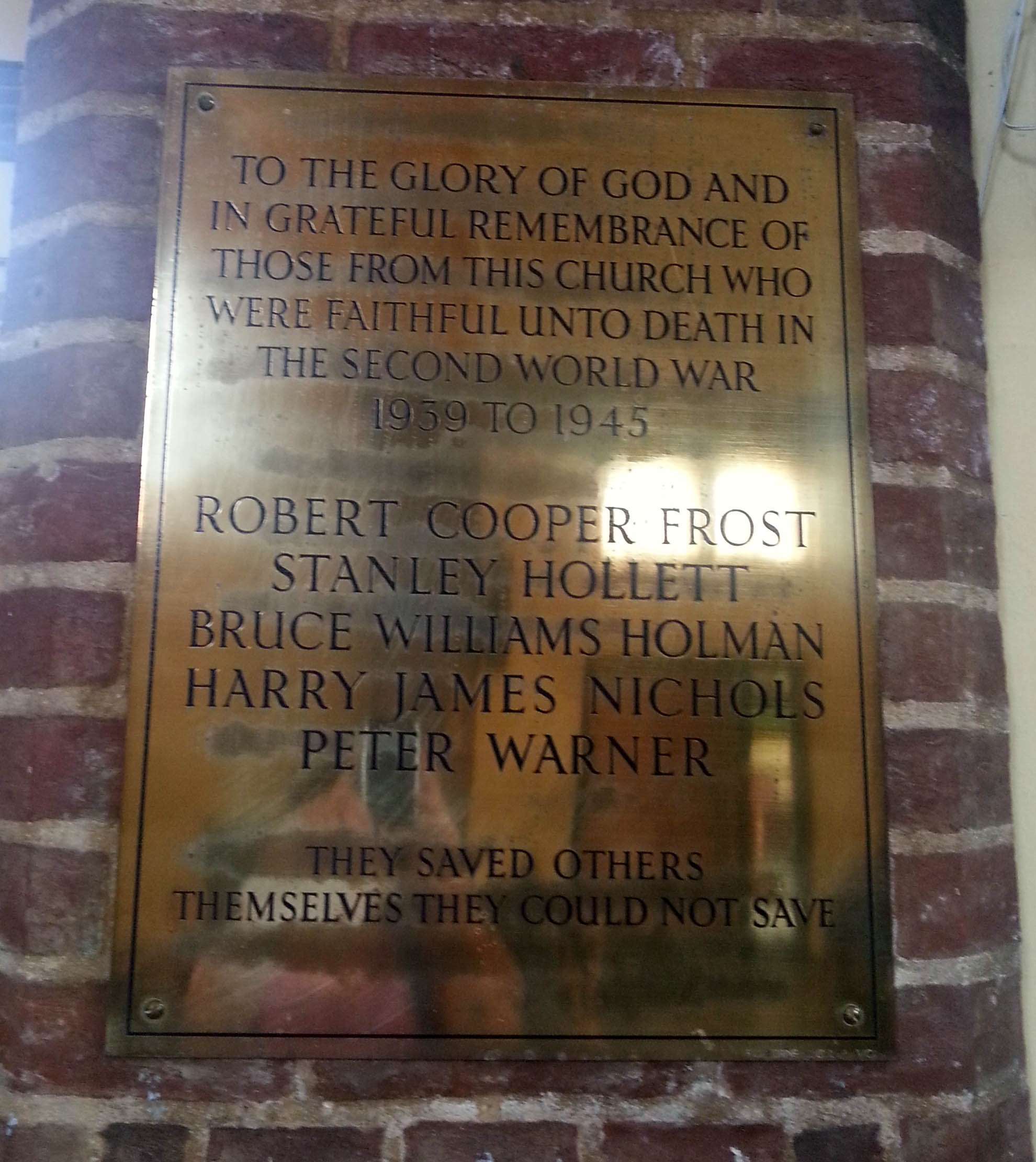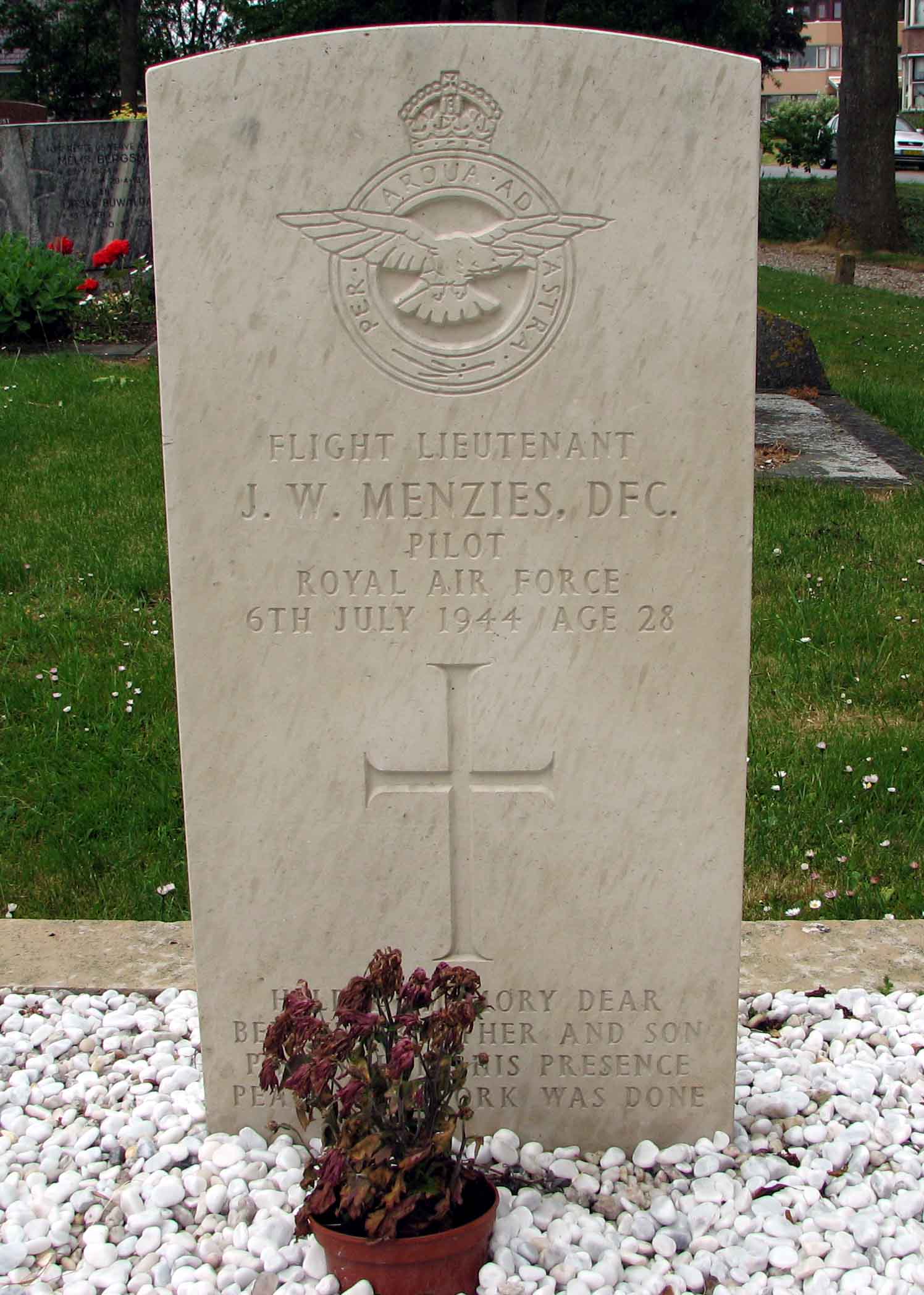


Remembering the fallen, 1939-45
Elaine McDowall continues her investigation of the WURC war memorials



In 2014 we explored the deaths of members of our church families who lost their lives in the First World War, the ‘war to end all wars’. Less than 21 years later, the world was at war again. Again both churches lost members and friends,serving in the Royal Navy, the Merchant Navy, and the RAF.
The ‘boys’ whose names adorn the memorial window were friends of Mavis Billingham’s brother. They were in the youth group together – Bruce Holman was their leader. Bruce was a paymaster lieutenant in the RNVR serving in HMS Welshman, a cruiser/minelayer en route to Alexandria after carrying supplies to Malta. The ship was torpedoed on 1st Feb 1943 about 45 miles east-northeast of Tobruk, Libya. 124 survivors were picked up after several hours and taken to Alexandria, but around 40 died. Mavis told us that Bruce had the chance to get into one of the lifeboats, but chose to swim away and leave the precious spaces in the boats to others. He is buried in Hadra cemetery at Alexandria.
Harry James Nichols was a leading motor mechanic on a Fairmile motor torpedo boat. These boats could be armed with torpedoes or guns but also used to seek out and rescue downed airmen. Harry died on 18th April 1944 along with at least one fellow crew member. The vessel survived but was sunk in August of the same year.
Peter William Warner was a Merchant Navy apprentice serving with SS Reynolds when it was torpedoed off the eastern coast of South Africa carrying military and general cargo from Durban to India on 31st October 1942. The ship was hit amidships and in the stern, capsized and sank within seconds. No survivors were ever found.
The last resting place of others is also unknown. Pilot Officer Airgunner Charles Edward Blair of 218 Squadron, flying long range bombers, died on 25th April 1941, and Sergeant Robert Cooper Frost of 90 Squadron which flew night bombing raids, died on 20th February 1943 in the build-up to the Battle of the Ruhr and the Dambusters Raid. They are commemorated on the Runnymede Memorial, just two of over 20,000 Air Forces personnel who have no known grave anywhere in the world. Many simply disappeared without trace.
Two are buried close to home, just along the road at Bandon Hill cemetery. In Section C grave 56 lies Sergeant Pilot Gathorne Field (Peter) Upton of 49 Squadron, RAFVR, who died on 25th August 1941 returning to Scampton airfield from a mission over Dusseldorf. Two Hampden bombers hit each other over the village of Hackthorn to the north east of the airfield. There were no survivors. The crew members were each returned to their respective home towns for burial.
In Section grave 37 lies Sub Lieutenant William Stanley Hollett RNVR, son of John Stanley and Alice Hollett of Carshalton. He died on 2nd May 1946, almost a year after the end of the war in Europe. The location is given as HMS Daedalus, the Fleet Air Arm training base at Lee on Solent, Hampshire. William’s inclusion on the memorial reminds us that suffering doesn’t end with the advent of peace. Brian Lay told us of Alf Williams, a prisoner of war in the Far East who made it home only to die some time later as a result of his experiences.
John Hastings Eastwood, son of the minister at Christ Church, served initially in the Royal Army Service Corps, and transferred to the RAF in January 1941. He served with 19 Squadron Operational Training Unit and died on 30th July 1941 along with his crew when his Whitley N1426 hit high ground at Lothernbar, near Nairn, on a cross country flight. He is commemorated at Aberdeen Crematorium.
Robert Maxwell Wilson was a warrant officer with no 320 Dutch Squadron, formed from personnel of the Royal Netherlands Naval Air Service, later assigned to Bomber Command operating from RAF Dunsfold, tasked with attacking enemy communications and airfields. He died on 9th February 1945 and is buried in Leopoldsburg War Cemetery.
John (Ian) Watherston Menzies was awarded the DFC in 1942 as a flight lieutenant with 101 Squadron. He then served with No. 161 (Special Duties) Squadron, a highly secretive unit of the RAF, which dropped and collected secret agents and equipment into and from Nazi-occupied Europe. His Hudson FK90 failed to return from a mission over the Waddenzee in the Netherlands on 6th July 1944 with four Dutch agents on board. Most of the crew, but not Menzies, were found drowned shortly afterwards and buried in Wonseradeel (Makkum) Protestant Churchyard. In 1997 Ian’s remains were found when the aircraft was recovered from the Ijselmeer. He was buried alongside his crew in 1998. The story of his discovery has been written by his nephew Robert Body and summarised in his webpages here.
Further information and photos can be found in Elaine's Dropbox: Wallington URC War Memorials